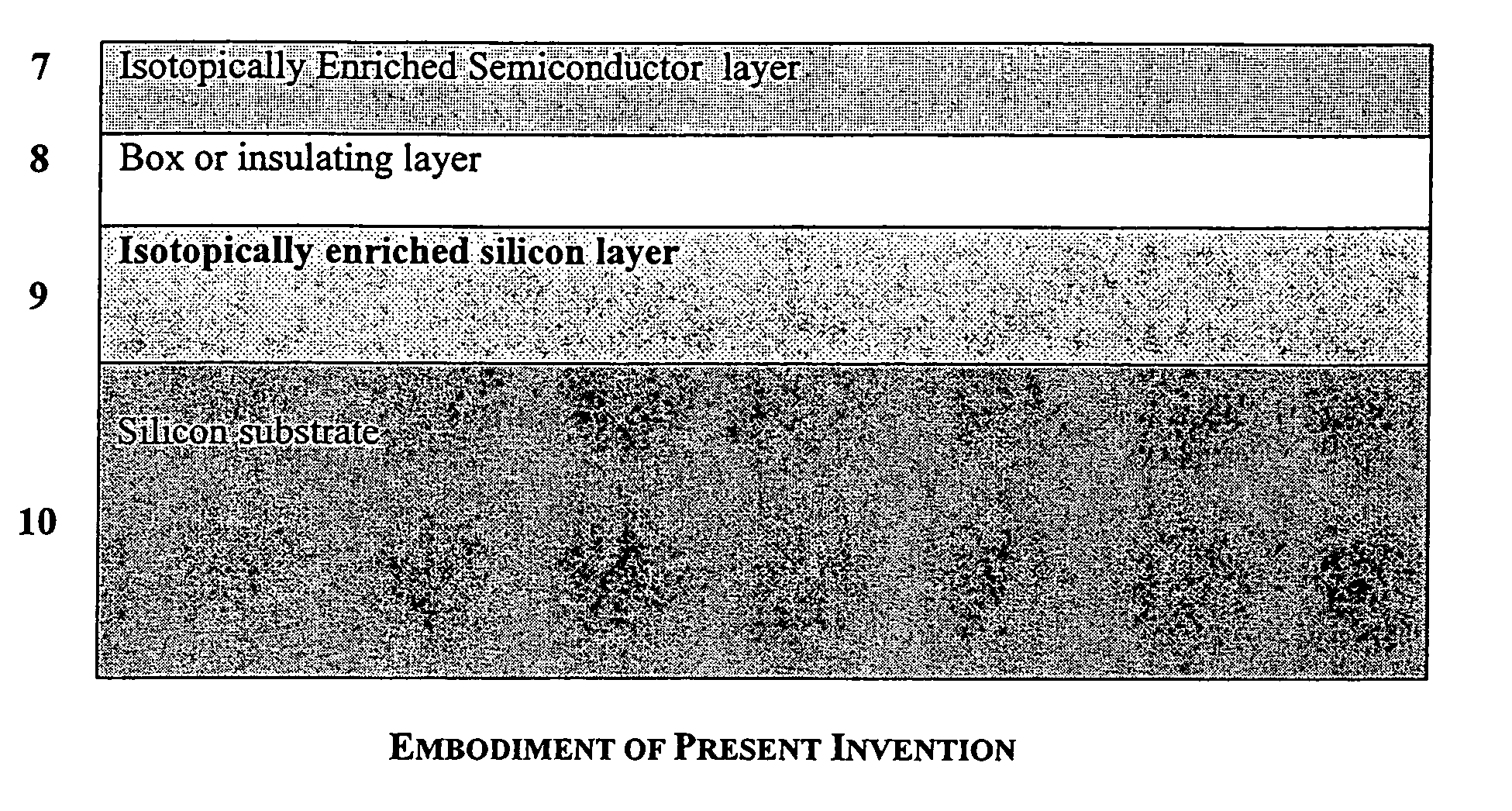Isotopically pure silicon-on-insulator wafers and method of making same
a technology of silicon-on-insulator wafers and isotopically pure silicon, which is applied in the direction of polycrystalline material growth, crystal growth process, after-treatment details, etc., can solve the problems of limiting the packing density of transistors on semiconductor wafers or the amount, power dissipation in semiconductor devices is limited, and the amount of transistors cannot be matched
- Summary
- Abstract
- Description
- Claims
- Application Information
AI Technical Summary
Problems solved by technology
Method used
Image
Examples
Embodiment Construction
[0018]In the naturally occurring form, silicon is composed of three stable isotopes; approximately 92.2% 28Si, 4.7% 29Si and 3.1% 30Si, which is roughly the composition of crystals and wafers used by the semiconductor industry. The presence of multiple isotopes contributes to phonon scattering which decreases the thermal conductivity of naturally occurring silicon.
[0019]Isotopically-enriched 28Si has been shown to have a thermal conductivity 60% to 600% higher than naturally occurring silicon as described in Capinski et al., Thermal Conductivity of Isotopically-enriched Si, Applied Physics Letters, v71, pp. 2109–11 (1997), and Ruf et al., Thermal Conductivity of Isotopically-enriched Silicon, Solid State Communications, v115, pp. 243–47 (2000), both of which are incorporated herein in their entirety by this reference. Isotopically-enriched means the silicon has a higher proportion of one of the isotopes of silicon than is present in naturally occurring silicon (e.g., it is composed ...
PUM
| Property | Measurement | Unit |
|---|---|---|
| thick | aaaaa | aaaaa |
| thickness | aaaaa | aaaaa |
| thickness | aaaaa | aaaaa |
Abstract
Description
Claims
Application Information
 Login to View More
Login to View More - R&D
- Intellectual Property
- Life Sciences
- Materials
- Tech Scout
- Unparalleled Data Quality
- Higher Quality Content
- 60% Fewer Hallucinations
Browse by: Latest US Patents, China's latest patents, Technical Efficacy Thesaurus, Application Domain, Technology Topic, Popular Technical Reports.
© 2025 PatSnap. All rights reserved.Legal|Privacy policy|Modern Slavery Act Transparency Statement|Sitemap|About US| Contact US: help@patsnap.com



